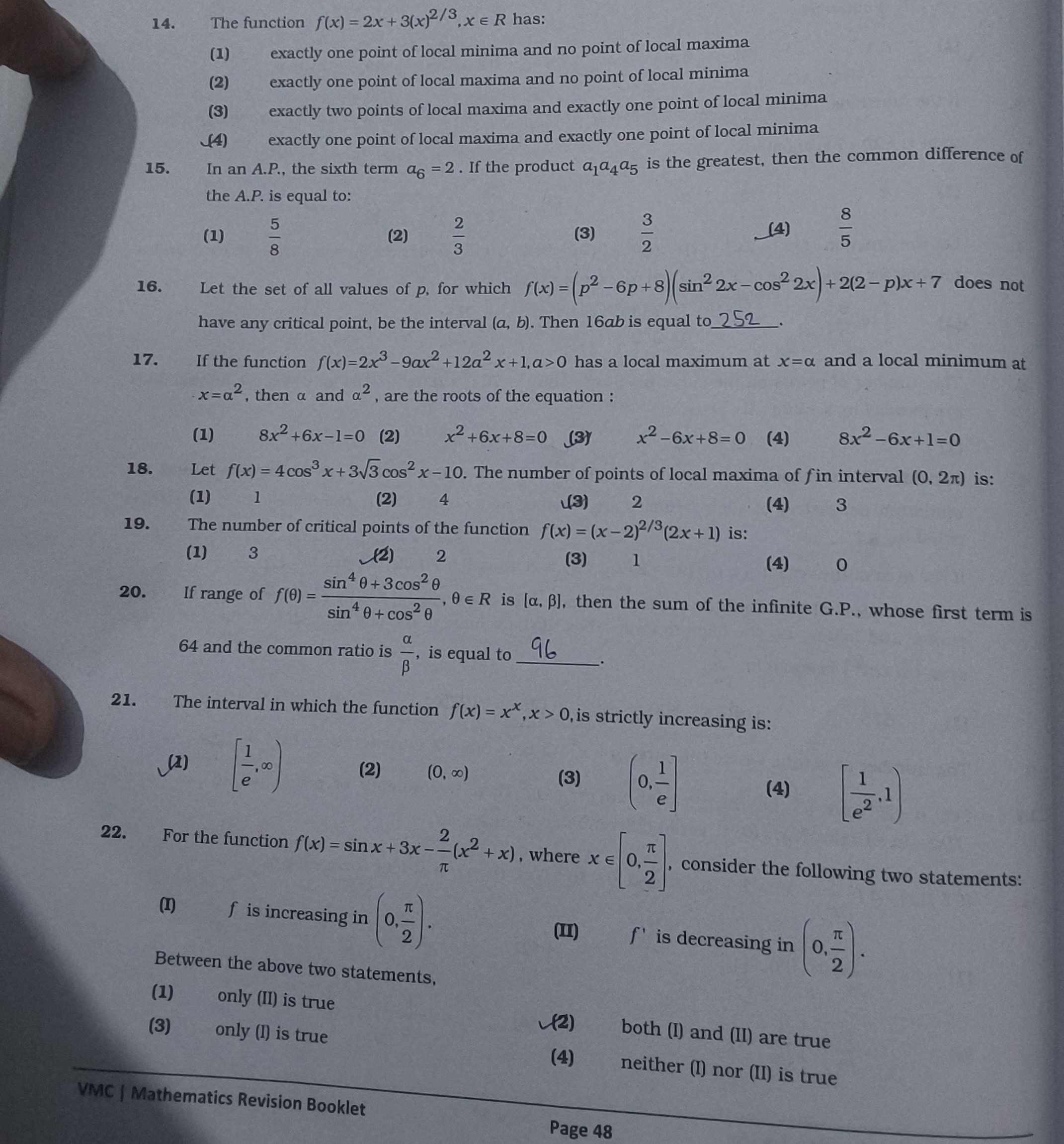Question
Question: The function f(x) = 2x + 3(x)2/3, x ∈ R has:...
The function f(x) = 2x + 3(x)2/3, x ∈ R has:

exactly one point of local minima and no point of local maxima
exactly one point of local maxima and no point of local minima
exactly two points of local maxima and exactly one point of local minima
exactly one point of local maxima and exactly one point of local minima
exactly one point of local maxima and exactly one point of local minima
Solution
The function is f(x)=2x+3x2/3. The first derivative is f′(x)=2+2x−1/3=2(1+x1/31). Critical points occur where f′(x)=0 or f′(x) is undefined. f′(x) is undefined at x=0. f′(x)=0⟹1+x1/31=0⟹x1/3=−1⟹x=−1. The critical points are x=−1 and x=0.
Analyzing the sign of f′(x)=2(x1/3x1/3+1):
- For x<−1, f′(x)>0 (increasing).
- For −1<x<0, f′(x)<0 (decreasing).
- For x>0, f′(x)>0 (increasing).
At x=−1, f(x) changes from increasing to decreasing (local maximum). At x=0, f(x) changes from decreasing to increasing (local minimum). Therefore, there is exactly one point of local maxima and exactly one point of local minima.
